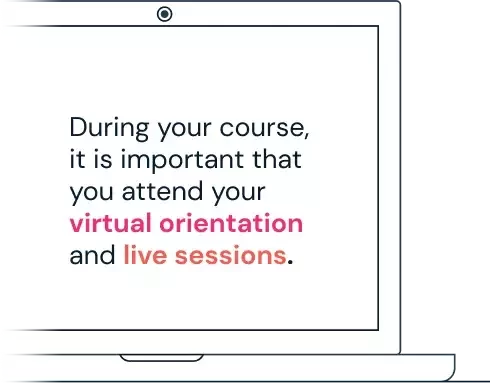OUR PARTNERS
Understanding your skills development needs, we have aligned ourselves with partners who believe in what we do. We’re connecting more than just people, businesses, and online courses but rather relationships, lifelong learning, and passion.

We’ll send you meeting requests to interact in workshops, breakout rooms, and collaborative group work in real-time. Build a sense of community and feel more connected to the course while confidently sharing your unique perspective, skills and experiences.
Deepen your understanding of your course subject matter and develop your problem-solving skills by learning from real-life experiences and understanding how to apply this knowledge in your life and career.
Live sessions give you the opportunity to directly interact with your Industry Experts and Learner Success Coordinators. Get access to additional resources, ask questions and learn from the experts to thrive in your career.

Virtual Orientation of our Online Campus
- Meet your Industry Expert and Learner Success Coach
- Familiarise yourself with the MasterStart Learning method, meet your fellow learners and confidently navigate the Online Campus
- Your Learner Success Coach will go through the course roadmap and outline expectations of the course
- You will have the opportunity to ask any questions or concerns you might have about the course
Your Online Interactive Community - engage with your peers through the community chat, ask questions and discuss the course content and assignment
Collaborative learning takes place during live online sessions with your Industry Experts and Learner Success Coach (LSC). Depending on the course these can be every week / second week. Your LSC will send you meeting invites to add to your calendar.
We don't not have a traditional exam structure, you will be expected to submit an assessment before the end of your online course.
Human
Supportive
Confident
Innovative

